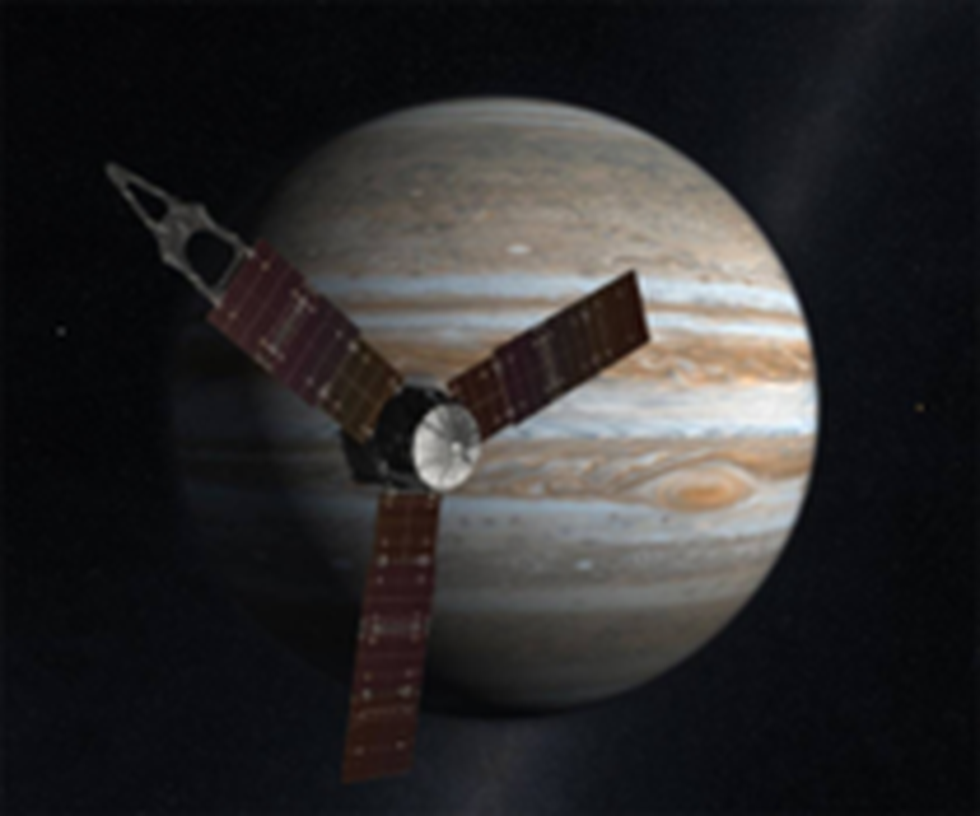
About the Juno spacecraft:
- JUNO is an acronym for Jupiter’s Near-Polar Orbiter.
- It was launched in 2011; the Juno spacecraft initially embarked on a 5-year journey to the largest planet in our solar system.
- Towards the end of its primary mission, the spacecraft’s objectives evolved, and it transitioned into a full Jupiter system explorer with flybys of Jovian moons.
- Goal:Understand the origin and evolution of Jupiter, look for a solid planetary core, map the magnetic field, measure water and ammonia in the deep atmosphere, and observe auroras.
Key facts about Moon Io
- Io is the most volcanically active world in the solar system, and it has hundreds of volcanoes that often erupt with molten lava and sulphurous gases.
- It is slightly larger than the Earth’s Moon and has a diameter that is about one-quarter that of our planet.
- It is tidally locked to Jupiter, meaning that one side of the Moon always faces the planet.
- It takes around 1.8 Earth days to both rotate on its axis and revolve once around Jupiter.
- It has a very thin atmosphere that is primarily made of sulphur dioxide, but one of the most interesting features of the Jovian moons is its volcanoes.
- The Juno mission has given scientists the closest look at Io since 2007, and it will continue to gather images and science data during even closer flybys later this year and early in 2024.
2. Sangeet Natak Akademi Amrit Awards
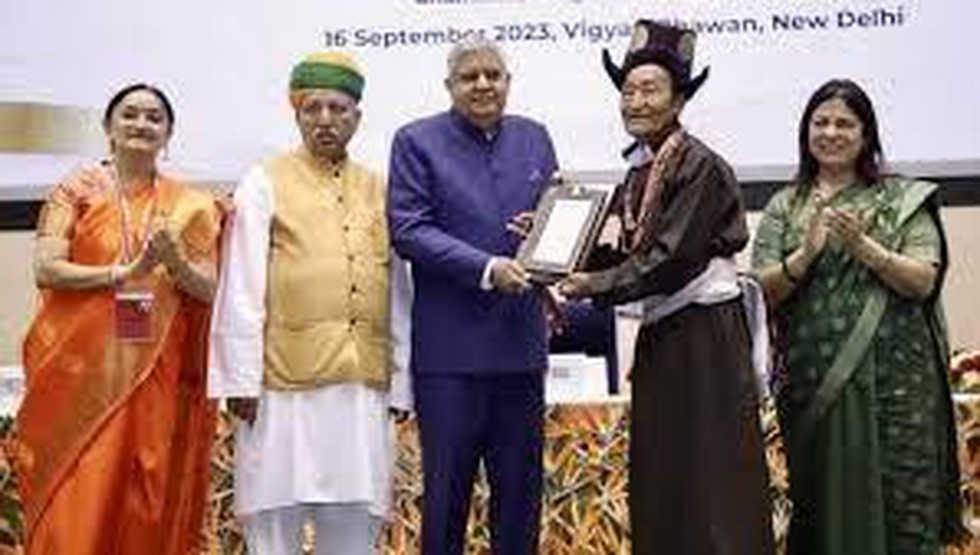
About Sangeet Natak Akademi Amrit Awards:
- It is a national honour bestowed on performing artists as well as teachers and scholars in the field of performing arts.
- The recipients are selected by the Akademi’s General Council.
- The Akademi’s General Council consisted of distinguished musicians, dancers, theatre artists and scholars in these disciplines and nominees of the Government of India, state governments, and Union Territories.
- The honour carries a purse money of Rs. 1,00,000/- (Rupees one lakh) besides a Tamrapatra and Angavastram.
- The award was constituted to honour Indian artists aged above 75 years who have not been accorded any national honour in their career so far.
Key facts about Sangeet Natak Akademi
- It is India’s national academy of music, dance and drama.
- It was created by a resolution of the Ministry of Education, with P.V. Rajamannar as its first Chairman.
- It was set up in 1953 for the preservation and promotion of the vast intangible heritage of India’s diverse culture expressed in forms of music, dance and drama.
- Presently, it is an Autonomous Body of the Ministry of Culture.
- The Chairman of the Akademi is appointed by the President of India for a term of five years.
- It is fully funded by the Government for the implementation of its schemes and programmes.
3. TrailGuard AI camera
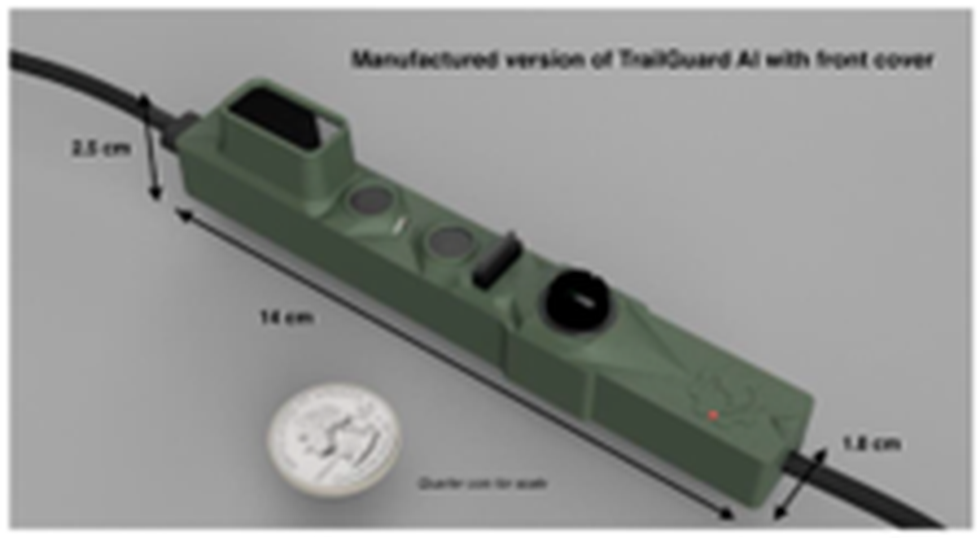
About the TrailGuard AI camera:
- These are slim devices that can be inconspicuously set up within the foliage of trees.
- Features
- It is Shaped like a pen, 13.8 cm long and 1.4 cm wide; it is wired to another ‘communications’ unit, the size of a notepad.
- The system has embedded software that can be instructed to take pictures of specific species of interest.
- It is incredibly small – the head of the camera, along with the passive infrared sensor, is only about the size of a person’s index finger.
- It can be set to specifically capture humans or species of interest — lions, tigers, cheetahs.
- If the camera is located in a place within the range of cellphone towers, it can send pictures within 30 seconds.
- If it is out of this range, it can rely on a longer protocol that can take from 3-10 minutes.
- The ‘AI’ element, or ‘embedded AI’ as it is technically known, in this system is that instead of transmitting every image captured, the camera only sends pictures of interest to forest officials.
- The product was developed by RESOLVE, an international non-profit, in which the operative AI processor is Intel’s Myriad chip.
4. Antlion species
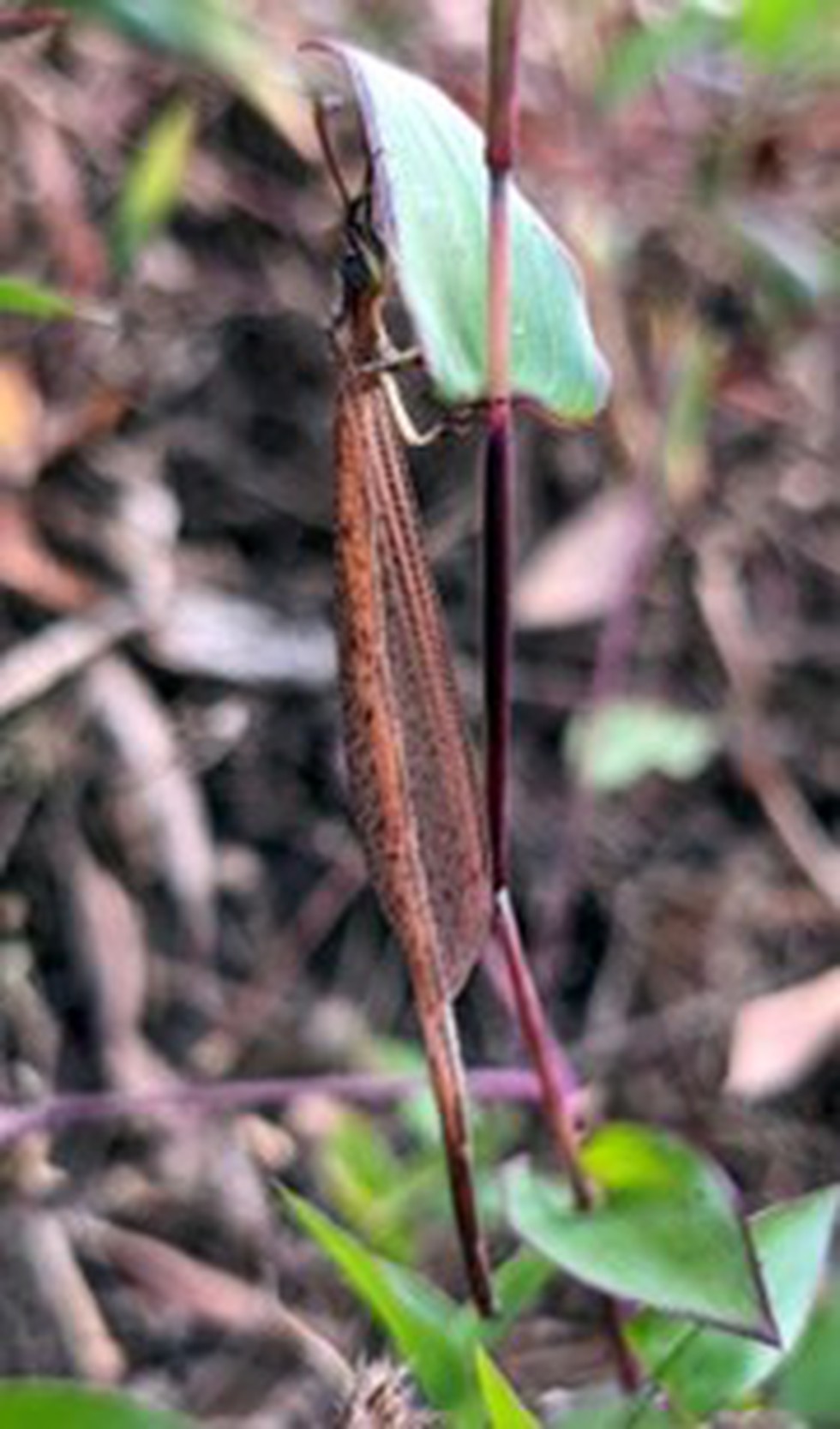
About the Antlion species:
- These two new antlion species belong to Myrmeleontidae family of the order Neuroptera.
- Antlions are commonly known for their pit-building habit.
- Larval stages of only some antlion genera construct the conical pits in loose, dry soil as their predation strategy.
- Larvae of Nemoleon do not build pits and live under the surface in loose soils where they are protected from direct sunlight, wind, and rain.
- Antlions can be easily distinguished by their long, distinct antennae.
- The genus Nemoleon is reported for the first time from the Oriental region.
- This is the 5th and 6th antlion species reported from Kerala and the 125th and 126th species from India.
- These are found throughout the world, primarily in dry, sandy regions.
- The research was conducted with financial assistance from the Council of Scientific and Industrial Research (CSIR).
5. Leptospirosis
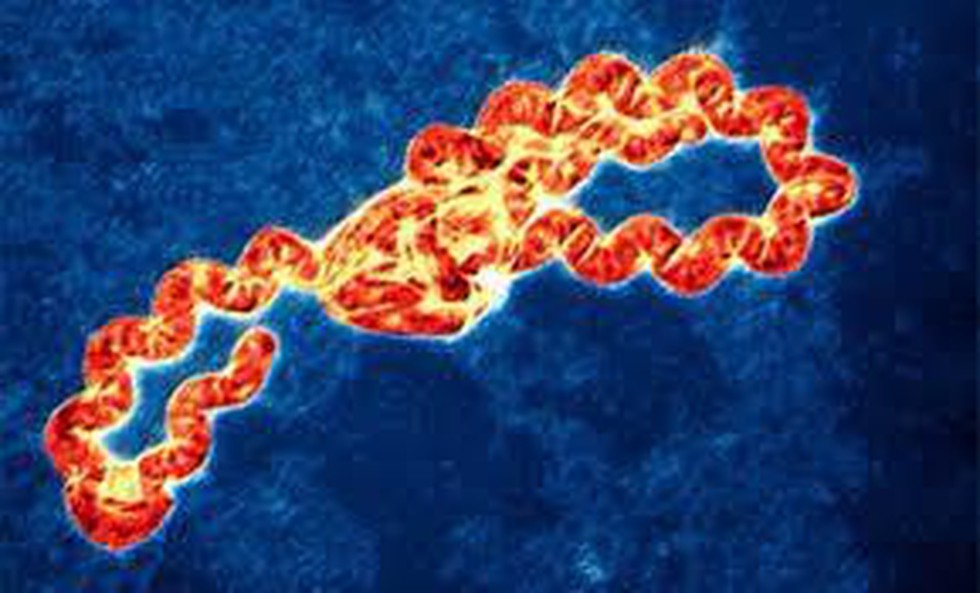
About Leptospirosis:
- It is a potentially fatal zoonotic bacterial disease.
- The disease is caused by a bacterium called Leptospira interrogans, or Leptospira.
- It is more prevalent in warm, humid countries and in both urban and rural areas.
- It is a contagious disease in animals but is occasionally transmitted to humans under certain environmental conditions.
- The carriers of the disease can be either wild or domestic animals, including rodents, cattle, pigs, and dogs.
- The cycle of disease transmission begins with the shedding of Leptospira, usually in the urine of infected animals.
- According to the U.S. Centres for Disease Control and Prevention, infected animals can continue to excrete the bacteria into their surroundings for a few months, sometimes up to several years.
- Leptospirosis may occur in two phases:
- After the first phase (symptoms: fever, chills, headache, muscle aches, vomiting, or diarrhoea), the patient may recover for a time but become ill again.
- If a second phase occurs, it is more severe; the person may have kidney or liver failure or meningitis.
- Treatment: It can be treated with antibiotics.
6. Gandhi Sagar Wildlife Sanctuary
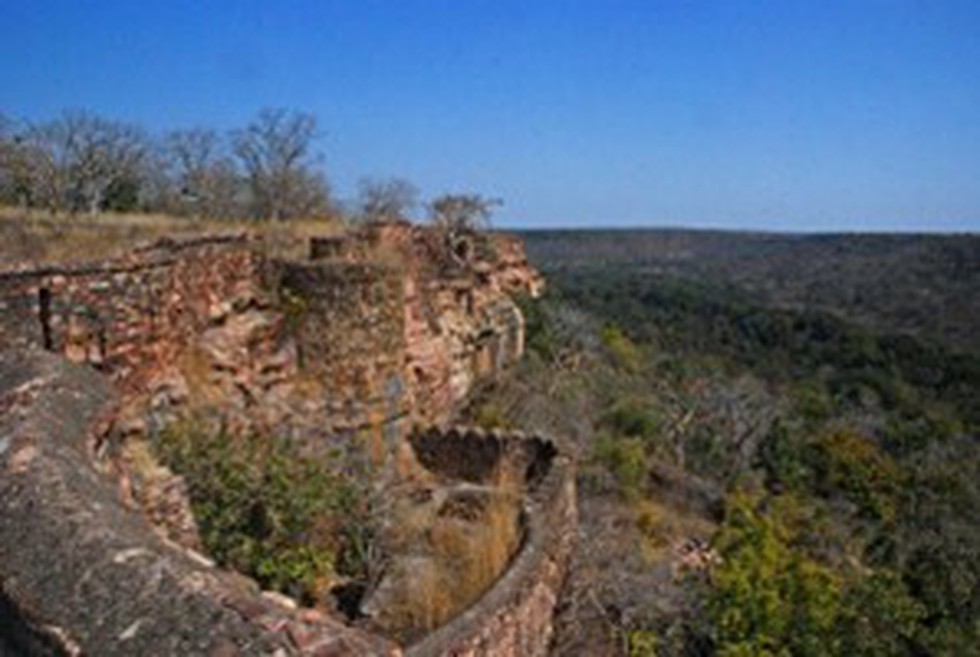
About Gandhi Sagar Wildlife Sanctuary:
- Location: It is situated on the northern boundary of the Mandsaur and Nimach districts in Madhya Pradesh.
- It is spread over an area of 368.62 km2 (142.32 sq mi) adjoining Rajasthan state.
- It lies in the Khathiar-Gir dry deciduous forest ecoregion.
- It was notified in the year 1974 and added to the list of sanctuaries in 1984.
- River Chambal flows through the sanctuary, dividing it into two parts.
- Topography: The sanctuary is characterised by its diverse topography, which includes hills, plateaus, and the catchment area of the Gandhi Sagar Dam on the Chambal River.
- The sanctuary has many places of historical, archaeological and religious importance, such as Chaurasigarh, Chaturbhujnath temple, Bhadkaji rock paintings, Narsinghjhar Hinglajgarh fort, Taxakeshwar temple etc.
- Flora: The principal tree species found here are Khair, Salai, Kardhai, Dhawda, Tendu and Palash.
- Fauna:
- Herbivores like Chinkara, Nilgai and Spotted Deer, and carnivores like the Indian Leopard, Striped Hyena and Jackal are found in good numbers in the region.
- It also has a good population of crocodiles, fish, otters and turtles.
7. What is Samudra Prahari?
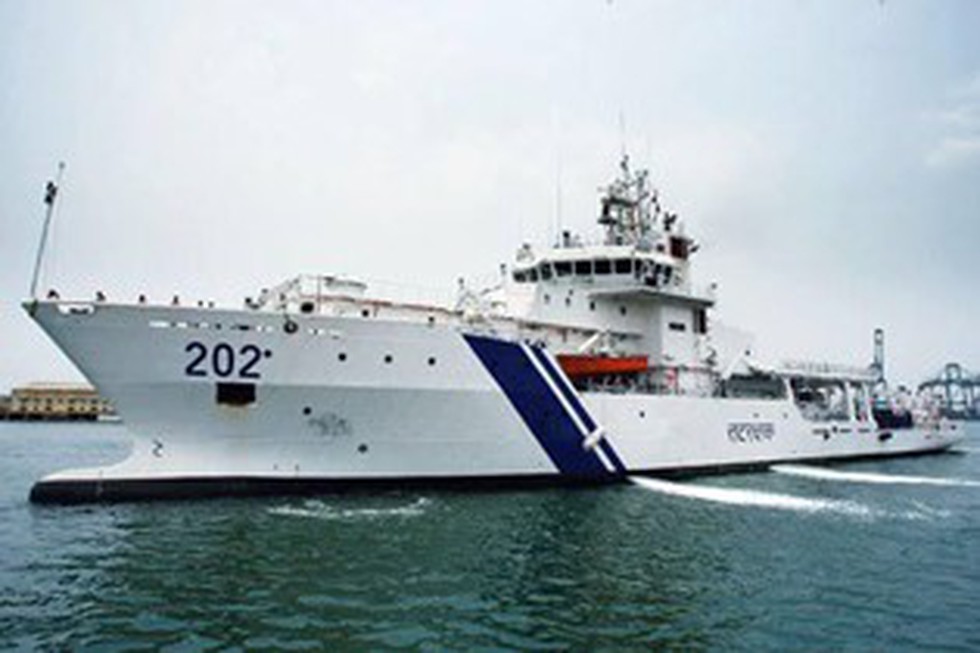
About Samudra Prahari:
- It is an Indian Coast Guard Ship (ICGS) specially designed for pollution control.
- It is the first pollution control vessel of its kind in Southeast Asia.
- Features:
- It is equipped with the most advanced pollution Response and Control equipment for mitigating oil spills in the Exclusive Economic Zone.
- It has tanks and inflatable barges for storage of oil spills.
- The ship is capable of unhindered oil recovery operations with a storage capacity of 500 KL.
- The vessel is designed to operate a twin-engine Advanced Light Helicopter and to operate and embark Chetak helicopter.
- Special features include an integrated platform management system, power management system, high power external fire fighting system and one indigenous gun mount with fire fighting system.
- The ship has unmanned machinery operation capabilities.
Key Facts about ASEAN:
- The Association of Southeast Asian Nations (ASEAN) is a regional grouping which was established in 1967 with the signing of the Bangkok Declaration.
- Founding members: Indonesia, Malaysia, Philippines, Singapore, and Thailand.
- Presently, ASEAN comprises 10 member states, namely Indonesia, Malaysia, Philippines, Singapore, Thailand, Brunei, Laos, Myanmar, Cambodia and Vietnam.
- It promotes intergovernmental cooperation and facilitates economic, political, security, military, educational, and sociocultural integration between its members and other countries in Asia.
- Secretariat: ASEAN Secretariat is located in Jakarta, Indonesia.
8. Critical Raw Materials Act (CRM Act)
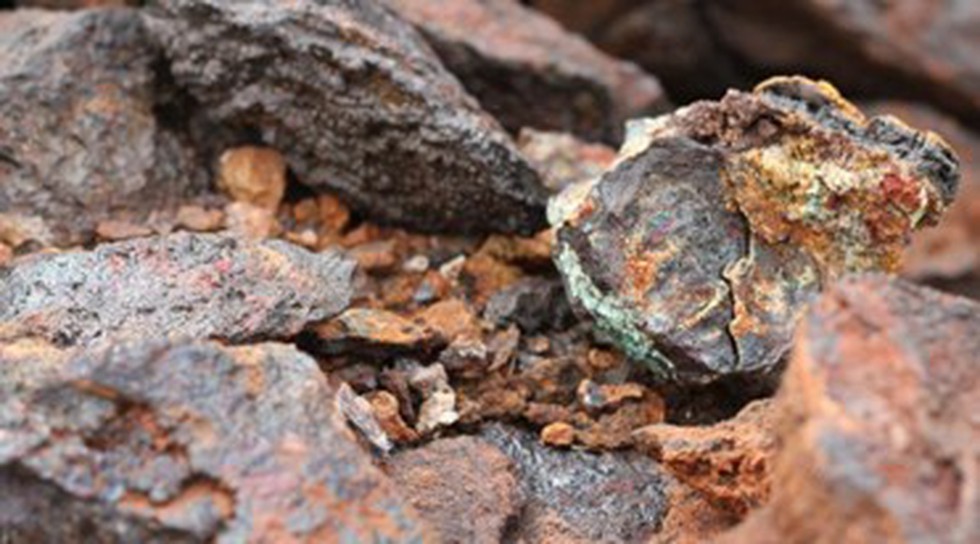
About the Critical Raw Materials Act (CRM Act):
- Critical raw materials (CRMs) are raw materials of high economic importance for the EU, with a high risk of supply disruption due to their concentration of sources and lack of good, affordable substitutes.
- The CRM Act identifies a list of 30 critical raw materials, including lithium, cobalt, nickel, rare earths, and magnesium.
- Objectives of the Act:
- Increase and diversify the EU’s CRMs supply;
- Strengthen circularity, including recycling;
- Support research and innovation on resource efficiency and the development of substitutes;
- Setting benchmarks by 2030 for domestic capacities: The Act sets these benchmarks along the strategic raw materials value chain and for the diversification of EU supplies
- at least 10% of the EU’s annual consumption for extraction;
- at least 40% of the EU’s annual consumption for processing;
- at least 15% of the EU’s annual consumption for recycling;
- no more than 65% of the EU’s annual consumption from a single third country;
- The Act will reduce the administrative burden, streamlining permitting procedures for critical raw materials projects in the EU.
- To ensure supply chain resilience, the Act creates CRMs for supply chain monitoring and stress-testing, coordinates strategic stocks and sets risk preparedness obligations on large companies producing strategic technologies.
- In addition to a list of CRMs for the whole EU economy, it lists strategic raw materials, which are those most crucial for strategic technologies used for green, digital, defence and space applications.
9. P-7 Heavy Drop Parachute System
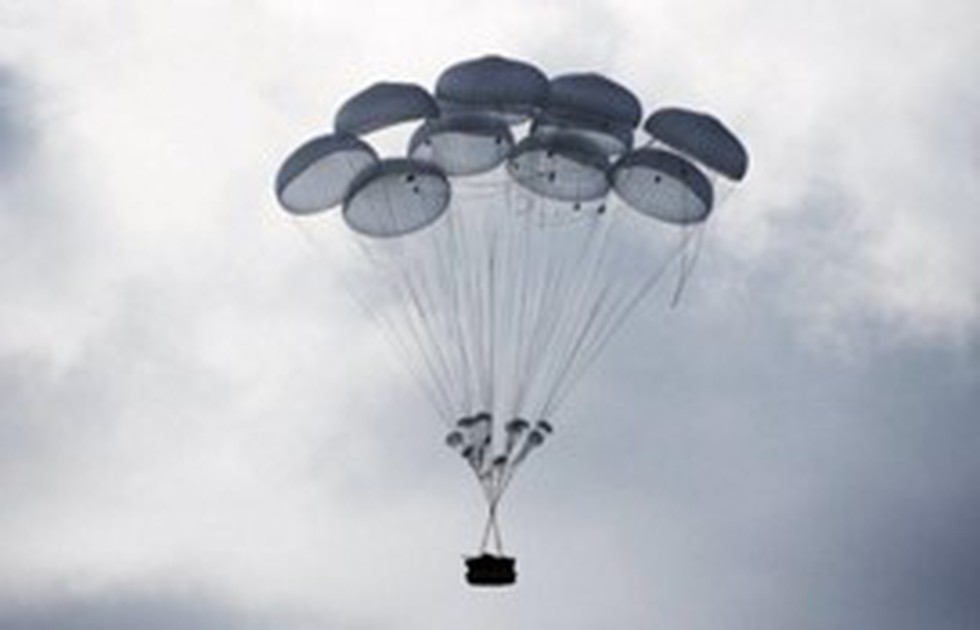
About the P-7 Heavy Drop Parachute System:
- It is a military parachute system primarily used for the airdrop of heavy equipment, vehicles, and supplies from aircraft.
- It was indigenously designed and developed by the Defence Research and Development Organisation (DRDO).
- Features:
- Weighing approximately 500 kg, the parachute guarantees the secure delivery of heavy cargo, even under challenging conditions.
- It comprises a platform and a specialised parachute system, promising to enhance the operational capabilities of the armed forces.
- It boasts eight main canopies, three extractor parachutes, one drogue parachute, and a suite of electrical, electronic, and mechanical systems.
- With a maximum load-bearing capacity of 8,500 kg and a permitted payload limit of 7,000 kg, the system operates at drop speeds ranging from 260 to 400 kph.
- Landing Speed: 7 m/sec
- Reusability: 5 times
- Its compact design allows seamless integration onto various aircraft, including the C-17, C-130, and other cargo aircraft of the IAF, providing versatility in deployment.

What are TTPs?
- TTPs stands for Tactics, Techniques, and Procedures.
- It is the term used by cybersecurity professionals to describe the behaviours, processes, actions, and strategies used by a threat actor to develop threats and engage in cyberattacks.
About TTPs-based Cybercrime Investigation Framework:
- It is a tool for apprehending cybercriminals’ modes of operations in a crime execution lifecycle.
- It was developed by the I-hub NTIHAC foundation (c3ihub) at IIT Kanpur with support from the Department of Science and Technology (DST) under the National Mission on Interdisciplinary Cyber-Physical Systems (NM-ICPS).
- The framework can help in tracking and classifying cybercrimes, identifying the chain of evidence required to solve the case and mapping evidence onto the framework to convict criminals.
- The technology can create an approximate crime execution path and suggest a crime path based on user-derived set of keywords.
- It can also compare modus operandi (Mode of Operation) used in different crimes, and manage user roles and track activity for crime paths.
- It could be highly effective as it restricts the number of forms and methods the investigation can be conducted and primarily relies on criminals’ TTPs. This leads to precise and rapid conviction of cybercriminals.


.jpg)


























































































































































.png)
.png)
.png)
.png)
.png)


.png)
.png)
.png)





.png)
.png)






.png)
.png)
.png)
.png)
.png)
.png)
.png)
.png)
.png)

.png)







.png)
.png)


.png)
.png)
.png)


.png)

.png)
.png)




.png)
.png)


.png)

.png)
.png)
.png)

.jpg)

.jpg)


.png)

.png)
.png)
.png)
.png)
.png)
.png)
.png)
.png)
.png)
.png)




.png)

.png)





.png)
.png)
.png)
.png)
.png)
.png)
.png)
.png)
.png)
.png)
.jpg)
.jpg)

.png)
.png)
.png)
.png)
.png)
.png)
.png)
.png)
.png)
.png)
.png)
.png)
.png)
.png)
.png)
.png)
.png)
.png)
.png)
.png)
.png)
.png)



.png)
.png)

.jpg)
.jpg)


.jpg)
.jpg)
.jpg)
.jpg)
.jpg)

.jpg)








.jpg)
.jpg)
.jpg)
.jpg)
.jpg)

















.jpg)
.jpg)







.jpg)


















.jpg)
.jpg)






























































































.jpg)
.jpg)


























.jpg)

.jpg)










.jpg)








.jpg)




.jpg)










.jpg)


















.jpg)












































.jpg)














.jpg)
.jpg)
.jpg)





.jpg)

.jpg)
.jpg)





































































.jpg)


































.jpg)
.jpg)
















































.jpg)












.jpg)


.jpg)




.jpg)
.jpg)
.jpg)

.jpg)
.jpg)
.jpg)
.jpg)

.jpg)
.jpg)
.jpg)

.jpg)
.jpg)
.jpg)
.jpg)
.jpg)
.jpg)
.jpg)
.jpg)

.jpg)


.jpg)
.jpg)
.jpg)
.jpg)
.jpg)
.jpg)
.jpg)
.jpg)
.jpg)
.jpg)











.jpg)
.jpg)





.jpg)
.jpg)
.jpg)
























.jpg)
























.jpg)









.jpg)
.jpg)







.jpg)
.jpg)









































.jpg)
.jpg)
.jpg)
.jpg)
.jpg)

.jpg)
.jpg)
.jpg)
.jpg)
.jpg)


.jpg)
.jpg)
.jpg)
.jpg)
.jpg)

.jpg)
.jpg)
.jpg)
.jpg)
.jpg)
.jpg)
.jpg)
.jpg)
.jpg)
.jpg)
.png)

.png)
.png)

.png)
.png)
.png)
.png)


.jpg)
.jpg)

.jpg)
.jpg)
.jpg)

.png)
.png)
.png)
.png)
.png)
.png)
.png)

.png)
.png)
.png)
.png)
.png)
.png)
.png)
.png)
.png)
.png)





































































-min.png)



.png)




.png)








































